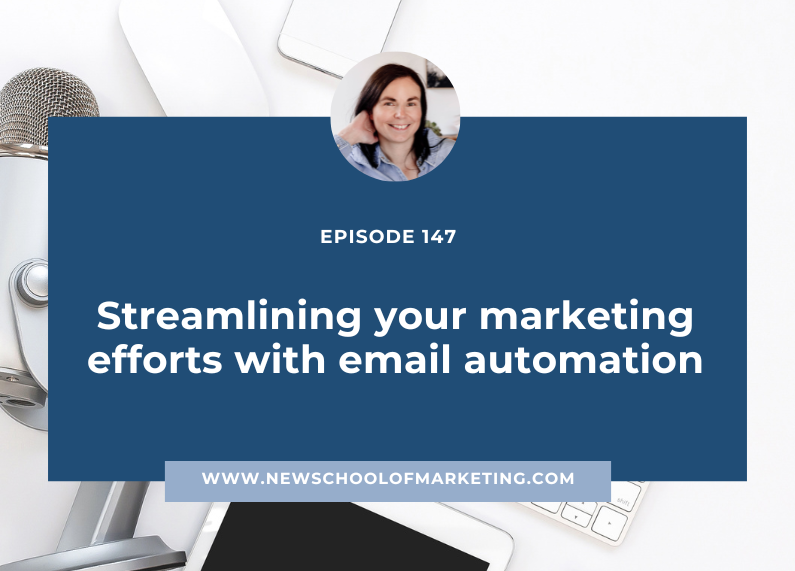
Inside this episode I talk about using email automation to streamline your marketing efforts and give your customers a better experience. I talk about the concept of email automation and its role in simplifying marketing tasks.
You’ll also hear about the benefits of automated email campaigns, such as lead nurturing and customer onboarding. Plus I highlight best practices for setting up effective email workflows and sequences.
Tune in
Connect with me
Website: www.newschoolofmarketing.com
Facebook: @newschoolofmarketing
Facebook group: @newschoolofmarketing
Instagram: @bianca_mckenzie
Love the New School of Marketing Podcast?
Let’s be honest and upfront, because you know that’s what I’m all about. Podcast reviews are super important to iTunes and the more reviews we receive the more likely iTunes will reward us with better reach.
I want to reach more course creators, store owners and awesome business builders that can add extreme value to our awesome insiders. I already love that you’re here and ready to rock your business, but I’d be extremely grateful if you would review me on iTunes and SUBSCRIBE!
Can’t wait to teach you everything I know about online marketing!
Transcript
Welcome to the New School of Marketing podcast. The place for smart, simple strategies that will amplify your business results. Sharing practical tips, insider knowledge and actionable advice. Because marketing is something that every business owner can do. Now let’s get started. Introducing your host, Bianca Mackenzie, mum, lover of snow, sports, camping, horse riding and in demand launch strategist and Facebook advertising knowledge bank.
Hello. Welcome to the New School of Marketing podcasts. Or if you’ve tuned in before, welcome back. I am so grateful to have you here. Before we dive in, I would love to pay my respect and acknowledgement to the palawa people of Lutruwita who are the traditional owners of the land on which my business operates. I pay my respect to their elders, past, present and emerging.
All right, this is going to be super exciting. I honestly can’t believe that we have hit October and only one more day and it’s November. Wow. Yeah, the year has gone by. Hey, cool.
Anyway, I want to talk about email automation. I love this topic so much. But I don’t always talk about the ins and outs. I talk about driving traffic and getting subscribers and how important that is. But I don’t necessarily talk about the benefits of using email automation. So let’s talk about it. It is an extremely powerful marketing technique, email automation that involves using software or tools. I know I might be losing you like software tools are, but yeah, you use software or tools to send emails to your subscribers or to your customers automatically. That’s the key of it. Automatically. And you do that based on predefined triggers or actions. It kind of takes me back to when I was first learning Excel. The whole if this, then that. So yeah, like triggers, actions and really it simplifies marketing and your marketing tasks by reducing the need for manual emails like manual intervention and it just streamlines all of your email campaigns. It’s just so much easier. Plus it also makes the mass emailing legal. So if you have an Excel spreadsheet of email addresses and you were to send an email like a mass email to all of those email addresses from your general email, it actually can be illegal because there are no ways for them to opt out or you’re making it really hard. Anyway, I won’t go into that, I am not a lawyer. But email automation software actually makes it easier. But often it also has that legal side to it. So let’s have a look at the concept and the role of email automation in simplifying your marketing tasks. And I want to start by saying that there are a number of different ways and different campaign types or automation types that you can use. So we’re going to look at all of these different ones and the first one is triggered email campaigns. So email automation basically relies on triggers to send messages at the right time. And these triggers, they can be actions that were taken by a subscriber. For example, they signed up for your newsletter or they made a purchase or maybe they abandoned a shopping cart. So when one of these triggers or a trigger occurs, the email marketing system then automatically sends a relevant email depending on how you set it up. So for example, when a subscriber abandons their cart on an ecommerce website, an automated email can then be sent to remind them that their item is in their cart. And often you can provide an incentive for them to complete the purchase. And all of this is done without manual intervention, which means that it saves you time and it also means that they get timely information, not like hey, like three days later your item is still in your cart, you want to get on it straight away, that kind of thing. So that is a triggered email. So a trigger occurs which then makes that email send. Another one is a drip email campaign. So drip email campaigns are very common in email automation and they’re basically a series of emails sent to subscribers at specific intervals. So drip campaigns are often used for lead nurturing onboarding new customers, or for example, you can use it to drip feed or roll out a course over time. So instead of sending each email individually, the marketing system, email marketing system can automate the process based on when a subscriber joins that particular campaign. So it makes it heaps easier to keep consistent and to have that sort of like relevant flow of information to your audience. Like if you had to do this manually, it’s quite a big task. So it’s so much easier. So that’s like drip feeding emails. Another big thing in email marketing automation is being able to personalize and segment. So what I mean by that is that you can use your subscriber data and the way they interact or the way they behave to then send specific content to them and specific offers to them to different segments of your audience. I always find it really hard to sort of explain it, but the email marketing system that I use, Mailerlite, kind of has it that you have segments and you have groups and I kind of like thinking about it as a group. So it’s like a group of people. So for example, you can send different emails to first time customers, you can send different emails to loyal customers, you can even send emails to inactive subscribers. So people haven’t really taken any action and done anything can be a little bit tricky, especially if they’re not opening their emails, but it’s worth trying. So yeah, there’s so many options and that kind of level of personalization can really increase your engagement and it can really increase your conversion rates. And honestly it’s so easy because you can set it up and it’s automated. I love it like so good. I’ve already mentioned abandoned cart recovery. So abandoned cart emails are like a total classic example of email automation. So yeah, when someone leaves their cart but doesn’t finish their purchase, it just automatically sends them a reminder. I know you might have them in your inbox, can be a little bit annoying, but I love them. So you can include product details, like even more information about them, more images and sometimes you can send discounts or something to sort of really entice them to come back and buy that particular item that they have in their cart. They tend to work on me. Some people, some customers now use it as a tactic to see if they are going to get an incentive. So I wouldn’t send discount codes straight away, but definitely communicate sort of like the benefits of them getting that product and just like giving them a little nudge, a little reminder. I find it quite useful because often I either need to think about it longer or I get distracted and then I don’t finish my purchases. So yeah, have that set up as a minimum if you have an ecommerce store. The other thing that’s really good about email automation is that it allows you to send messages at specific times, like the best times and sounds a little bit hard. But for example, you can schedule emails to be delivered at specific hours or specific days and you can look at your data to see when your subscribers are mostly opening their emails. And then you can tweak that. Like you can deliver it just before then so that it’s at the top of their inbox. So there’s so many things and tricks that you can do. So yeah, if you deliver it just before they normally open their emails, it means that they have a higher chance of your emails being seen and actually people start taking actions. Yeah, so now we’re talking data, right? Because you have to look at the data to see what’s happening. And email automation tools and software, they often have lots of detailed analytics for all of the kind of things that you want to be looking at, how they’re performing. So when people are opening your emails, click through rates, conversion rates, all of those kind of metrics. So look at the information and then you can actually fine tune your email marketing strategy to have even better results. So look at that as well. Now you do need to be consistent, like consistently communicate with your audience because if you don’t you’ll start to see like a sales drop off but it also enhances the customer experience, like the more consistent you are. And this is where email automation can play such a big role, especially one of those drip campaigns. If you set up a drip campaign and it just takes people through, you can set it up for a whole year or years to go because all of these emails can just follow up on each other. So be consistent because that’s where it gets effective and that’s where it actually helps you in making sales. So yeah, just to wrap up this part quickly, email automation simplifies your marketing tasks by letting you send regular, timely, relevant and sometimes personalized emails to your subscribers without the need for any manual intervention. Like it can all be automated, no manual side of things needed. You can still send manual emails. It doesn’t mean that if you have, for example, an email that is time specific, for example, like Halloween or Black Friday, that doesn’t have to go in a drip funnel or something like that, but again, you can automate those kind of things as well. But you can still send manual emails as well. It just makes you more efficient. It actually improves the customer experience and it just allows you to focus on a strategy and on the creative aspects of your marketing campaigns without having to sort of come up every week with or however often you send it. Plus when I’m saying this, however often you send it, a lot of us, if we don’t automate it, we might not send it and nobody wants to then get an email like three weeks later and go, who is this? Emailing automation is so much easier and it’s so much more efficient. There’s also obviously, apart from the fact that it’s efficient for you, there’s other aspects that are beneficial for your business. And I find for my business, lead nurturing and customer onboarding are two of these things. So I want to talk about that a little bit more. So basically, lead nurturing is the process of building and maintaining a relationship with potential customers throughout various stages of your funnel. I don’t know, I’m starting to talk funnel and things like that. But automated email campaigns can be really effective for nurturing a lead from when they first find you to potentially buying from you. It’s like an education, automated education process and an automated, in a way, sales process. It could be nurturing first, but it could also be a sales process. So sending them sort of consistent emails, timely, relevant emails, looking at their behavior as well, but like dripping out automated emails where you provide information, that’s like a process for someone to go through, it’s like a journey and using it that way helps build trust and it guides that lead towards a conversion. Another thing in terms of leads is that you can actually use it to qualify leads. So automated email campaigns can help you qualified leads by identifying their level of interest and their level of engagement. And then if you do have a sales team, they can then focus on the leads that are more likely to convert. Like you get so much data from this. So there’s a whole side of lead nurturing and finding out which leads are most likely to convert that you can then contact those specific customers or leads. They’re not yet customers. I also mentioned customer onboarding. I love this because it is such a good experience for someone who has just purchased from you. So Customer Onboarding is basically a similar process. It’s like guiding a new customer through the first experience with your product, your service, but also your business. And automated email campaigns are just so good at doing that. Again, it can give them tips, it can give them more insights on how to use the product. It’s almost like, yes, you can use it to sell, but you can also use it to really enhance someone’s experience. If I sign up, for example, to a course and then I get emails of where to go and welcoming me and it’s like, it’s like a warm hug. You get a welcome pack. It also helps keep customers engaged and it really shows that you’re invested in their success. You’re part of their journey. It’s not like they buy from you and it’s like, okay, you wipe your hands clean and you’re like, next customer. And then let them fend for themselves. So yeah, make it a really good sort of process with you and those customers that feel like they’re looked after, they will be your biggest fans. And then you can upsell, cross sell. They might become your affiliates. They might just shout what you do from the rooftops without being incentivized. So Customer Onboarding, really big one as well. For automating that part, um, another part to include is getting feedback and getting reviews. It’s all things, you can be automated. Like if someone has purchased your course and you’ve drip fed that specific course and at the end of that course, you can then send them automated emails to ask for reviews and feedback. And you might think that maybe that sounds a little bit impersonal, but you can make it personal. There are a lot of ways that you can incorporate this in your business. So really automated email campaigns are a really powerful tool in your marketing. They’re a really powerful tool in your customer relations. And I see them as one of the most important things in nurturing your leads or attracting your leads. Nurturing your leads, making sure that potential customers receive the right information at the right time. Guiding them through that sales funnel. But also, once they are a customer, it’s just a really good way to give them the support, give them the resources that they need to become successful at what they’ve purchased and that they are happy customers. Yeah, super important. Now I can also go into setting up your workflows so that you can nurture those leads so that and engage your customers so that you actually get to your marketing goals. And I want to talk about some best practices because there’s so many things that I often see go wrong and I don’t want that to happen. I’m not going to tell you what emails to write because that’s not something I want to go into but I do think it’s important to mention that one, you need to look at your goals. So really look at what is the goal, the objective of your email workflow or like sequence, whatever you want to call it. So look at whether you’re nurturing leads, are you onboarding new customers, are you reengaging inactive subscribers, are you looking for conversions aka sales? So you need to know your goal because that’s the first step in creating a successful sort of sequence and flow. Another thing is your audience. So look at your audience and potentially segmenting your list based on relevant criteria and it could be certain behaviors or purchase histories because there’s no point in setting up a sales sequence to people that have already purchased. So yeah, looking at sort of segmenting your audience because that will allow you to send targeted emails and relevant content to the right people. I’m a big fan of actually mapping all of this out. So before you actually start building it in your email marketing software, visualize it, put it on a piece of paper and really look at the logic and the sequence of each email so that you’re actually visualizing your customer. Journey because you want to make sure that your emails are sent at the right time and in the right order and all of that. So sit down with a big piece of paper and map it all out. Super simple. One, start with a welcome email. It seems pretty obvious but yeah, for lead nurturing and for onboarding sequences, start with a welcoming email and that kind of sets the tone for your relationship and gives them that positive first impression, like literally welcome them. Then look at providing value. So every email in your sequence should provide some sort of value to your subscriber. It could be educational content, it could be offers, it could be problem solving tips, it should be obviously relevant to what their needs and their interests are. But yeah, provide value is another one nobody wants to be sold to all the time. If you can personalize, definitely personalize. So start with the person’s name. And again, email marketing software makes that so easy. So send them an email where you say hey and then name because it just makes it more, I don’t know, not so impersonal, not the right way to explain it, but you want to make sure that you’re addressing someone with their name. Timing really matters. So pay attention to the time of your emails. And look, I don’t always do this because there’s time zones and things like that. So yes, some people who are not in Australia will receive my emails at very OD times. I probably can make changes there but in terms of time I kind of want to focus more on where someone’s at in the buyer journey and that comes down to really knowing your audience, like knowing how long it takes them to get to a certain stage. Some people need more education, they need more time. So you don’t want to send a welcome email in terms of a lead. You don’t want to send a welcome email and the next email you’re like full on hardcore selling. That kind of timing is what I’m talking about. Look at your numbers, look at engagement, look at open rates, click through rates, conversion rates, but at the same time know what sort of the benchmarks are because not everyone is going to open your email. So you simply cannot have 100%. So knowing what kind of the benchmarks are and what you’re going to be comfortable with and then tweaking along the line. Also look at potentially what type of content tends to get the highest open rates, what type of content tends to get the highest click through rates, that kind of thing. Because then you can focus on creating more of that type of content. What else do I want to say about this? Testing is another thing. You can test various sort of email subject lines, you can even test different content. Look, the whole process, marketing, emails, it’s all testing, it’s all constantly. Tweaking, testing, tweaking, testing. So yeah, focus on that. We’ve already spoken about triggers, so make sure that you use certain triggers to automate it. Don’t forget to turn it on. Done that before. One more thing that’s really important is making sure that it works on mobile because a lot of people read their emails on mobile. So you want to make sure that it is actually readable on mobile. I am subscribed to a few lists and it’s really hard to read on mobile. So make sure that it’s actually easy to read on mobile. Send yourself some emails. You can often send like a test email and if you want to make sales or you want people to actually take action, make sure that you include a call to action. Seems pretty obvious, but a lot of people don’t. So if you want someone to take an action, you need to make it easy for them to take that action. Whether it’s like clicking a link, making a purchase, signing up to something, make it easy and include a clear call to action. I spoke a little bit about the legal side at the start of this episode. Look, I am not a lawyer, but make sure that you’re sticking to email marketing regulations. Look it up in your country. Like there’s can spam, I know, can spam, very Australian GDPR. So just make sure that your emails are compliant and ethical because one, you don’t want to make your subscribers angry. I’ve had that before, I’ve just been so annoyed when there is an unsubscribe link, but they’ve made it white, so like it’s there, but it’s hidden. So yeah, just make sure that you’re compliant and then just look at your things. Just keep monitoring, keep tweaking, keep optimizing, do more of what’s working, identify the bottlenecks and just make little bits of improvements. Email marketing is like a constantly evolving process, so you need to optimize it regularly so that you’re getting better and better. So it is super powerful. Like email marketing, automation is extremely powerful and it’s extremely effective when it’s all set up and it takes time to build it all out. But it doesn’t have to be complicated. I would say start small and go from there. Even one automated email to a new buyer or even a new subscriber makes a difference that welcome email is so important and then you can build from there. Email marketing is still one of the most effective ways to sell to your customers and it continues to have the highest ROI, the highest return on investment. So it is well worth the effort and time. Honestly, I am encouraging you to Google return on investment of email marketing. You will find it is somewhere between 3000 804,300%. It may have dropped a little bit in the last few years, but it is still the highest return on investment. If you want to learn more about email marketing, I’ll put some links in the show notes of previous episodes because I do talk about it quite often. It is one of my favorite marketing tactics and it’s actually one that I focus highly on when it comes to using Facebook advertising. It’s one of the ways to drive traffic and to generate more leads, especially when you’re selling courses, online courses and things like that. So, jam packed episode I know I’ve talked about a lot. If you have any questions, feel free to DM me. I’m always open in my instagram DMs if you want to have a chat about things other than that, I’m going to leave it at this because yeah, I could just keep talking about this.
Thank you so much for joining me on this episode of the New School of Marketing podcast. I hope it was helpful. Can’t wait to share more marketing tips with you next week. And remember, if you’re ready to take your business to the next level with Facebook and Instagram advertising, make sure you visit newschoolofmarketing.com to download practical free resources. Plus subscribe to the podcast and never miss an episode. I can’t wait to go on this journey with you. Until next time, take care and market your business every day.


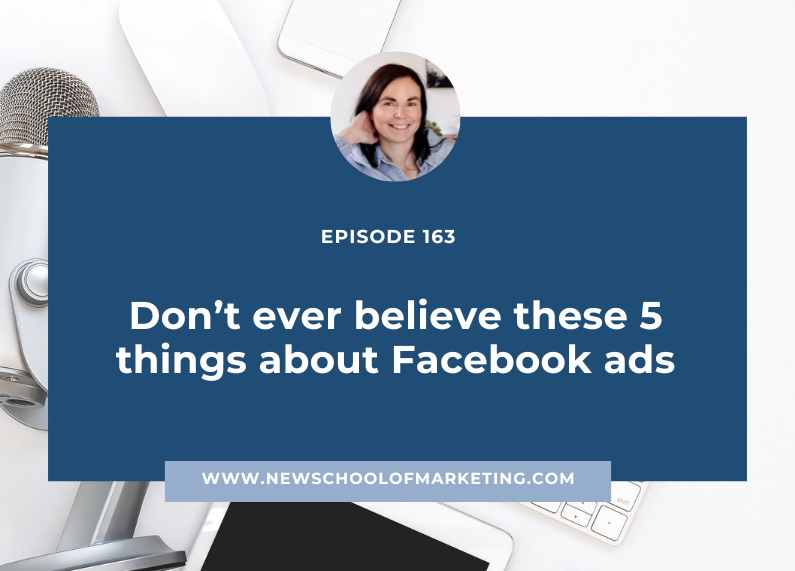
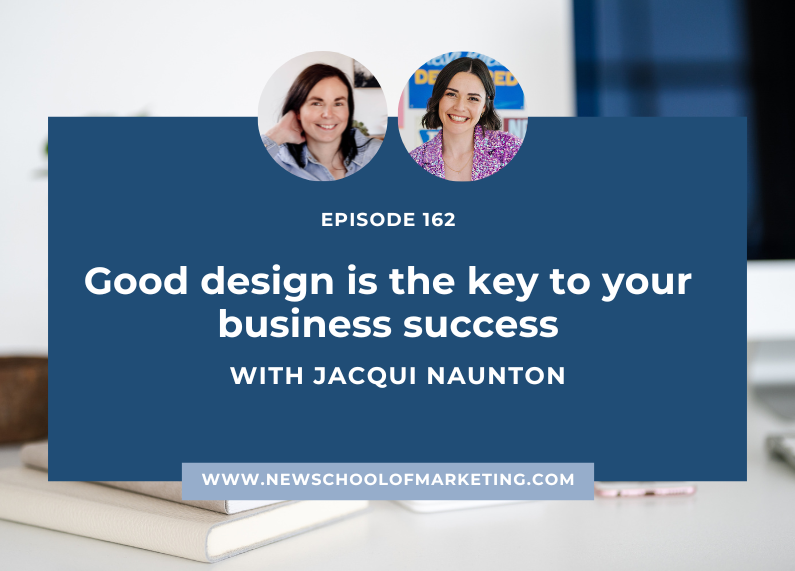
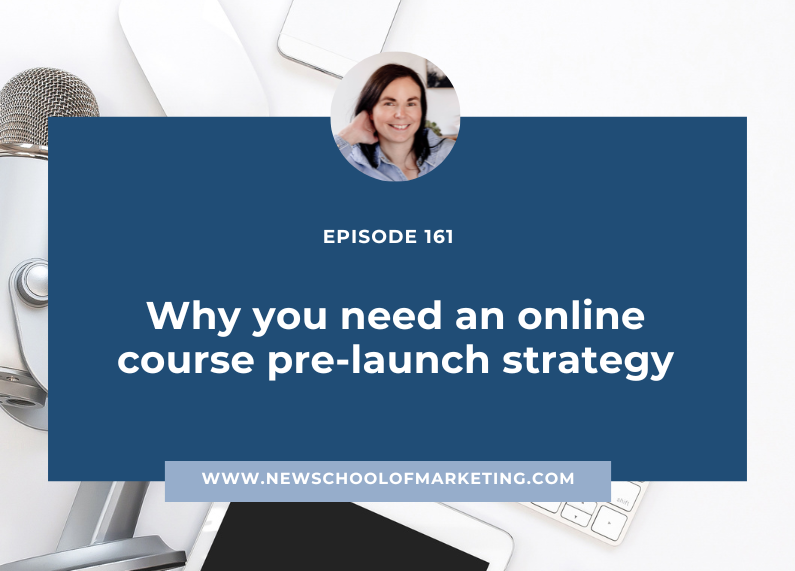
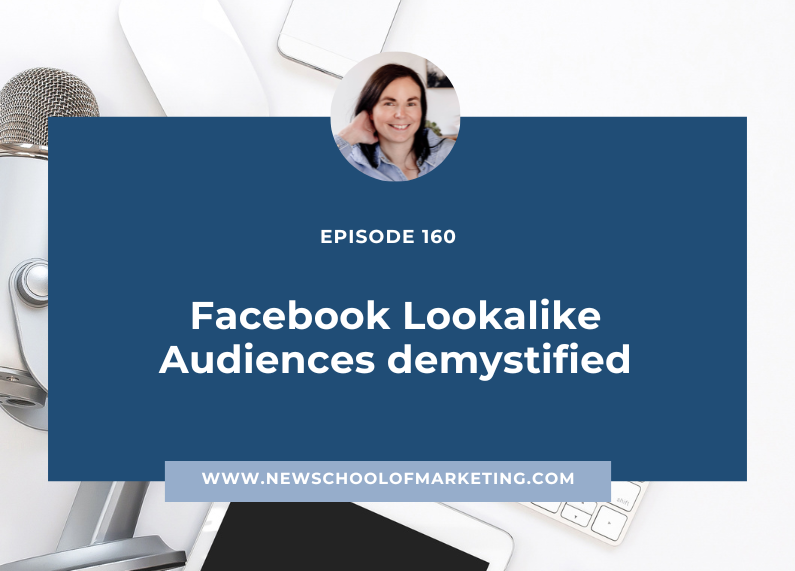
0 Comments